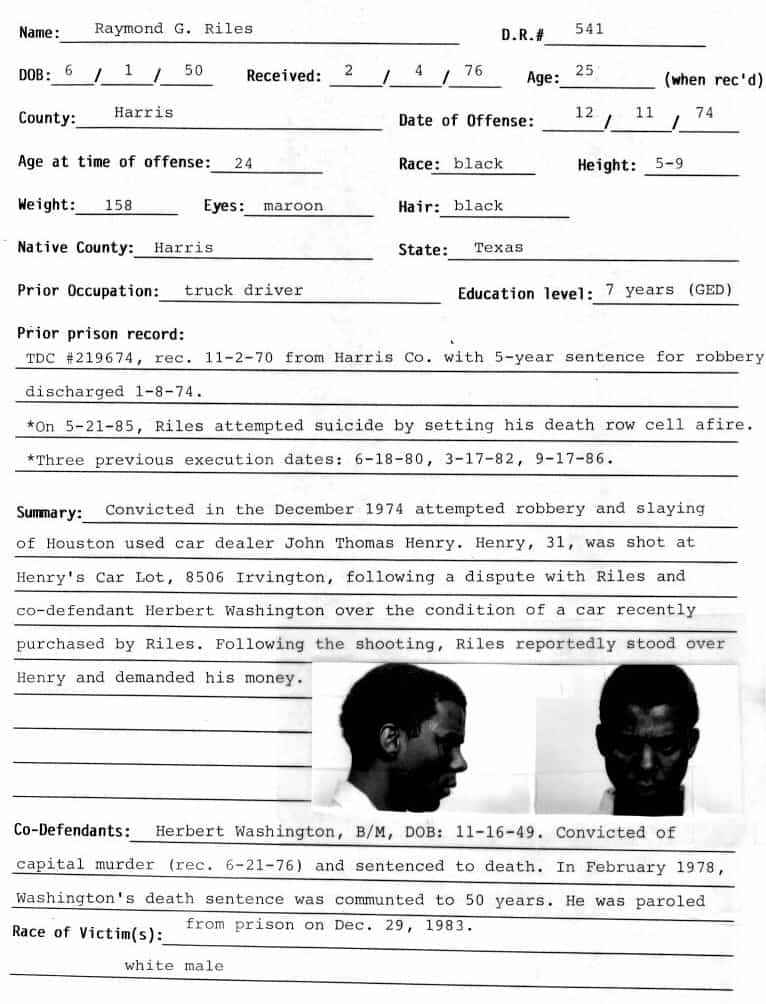The existence of the death penalty in 31 states (and the federal government) continues to cause controversy as human rights activists try to claim it is a barbaric method of punishment. On the other side of the coin, proponents of the death penalty say it is the correct sentence for anyone found guilty of committing murder. There are over 3,000 Death Row inmates in the U.S. 1,447 people have been executed in the country since 1976.
Approximately 65% of Americans agree with the death penalty, and the vast majority of executions are carried out by lethal injection. The main issue with Death Row is the length of time inmates spend there before being put to death. There is an average of almost 16 years between sentencing and execution on Death Row, and an increasing number of inmates are spending over 25 years waiting to die. The appeals process is a long and arduous one, and most prisoners use it as a means of gaining a stay of execution. In this article, I will look at 5 of the longest-serving Death Row inmates in U.S. history.

1 – Raymond Riles (41 Years)
Riles has spent over 41 years on Death Row; the longest anyone has spent waiting to die in Texas, and one of the longest-serving Death Row inmates of all time. Riles was convicted of the murder of John Henry in 1974 during a robbery and sentenced to death the following year. Mental illness is what has prevented Riles’ execution to date.
On the fateful day in 1974, Riles accompanied Herbert Washington to John Henry Motors in Houston, Texas, where the latter previously bought a used car. Washington was angry because the vehicle had problems, so the duo confronted John Henry, the owner of the company, and demanded a refund. Henry said he wouldn’t issue a refund, but did agree to repair the vehicle. Riles ended up shooting Henry him from behind. Henry didn’t die immediately, and Riles stood over him and demanded money.
The dying man complied and Riles, along with Washington, traveled to Herby’s Foods and spoke to a manager about job openings. The manager refused to provide the men with job applications, so they robbed him and his wife and stole $1,800. The police saw the pair in Washington’s car and chased it at speeds of up to 100 mph. Eventually, Washington crashed his car, but instead of surrendering, the two men opened fire on the police and fled, only to be arrested soon after.
Riles’ unstable mental state was on full display during his trial when he continually interrupted proceedings to the point where he was eventually confined to a cell. During an interview with a psychiatrist, Riles acted like a dog; he attempted to bite her and started howling and barking. Washington said that he once witnessed Riles tying his wife to a railroad track as a train approached; he screamed ‘Repent, Jezebel’ at the terrified woman.
Although Washington received a death sentence, it was later overturned, but he did get a 50-year jail term for trying to murder a police officer in a different case. Riles also received the death penalty, but a retrial was necessary in 1978 because prosecutors used evidence from the Herby’s robbery during the murder trial. Nonetheless, Riles was again convicted and sentenced to death. He received the first of several stays of execution in 1980.
In 1985, Riles, along with nine other Death Row inmates in Texas, signed a petition to forego appeals and accept execution. However, as Riles has a mental illness, it is highly unlikely that he will ever be executed. There is little question that Riles is mentally unstable. He blamed God for his suicide attempt in 1985 where he set himself on fire in his cell.
He has shown the bizarre workings of his mind in several interviews. For example, he claims ‘they’ are trying to silence him because he knows about the secret satanic societies of the TDC shadow government e-system. One wonders if people such as Riles and the next man on this list should be confined to mental institutions instead of wasting time on Death Row when they most likely won’t be executed.

